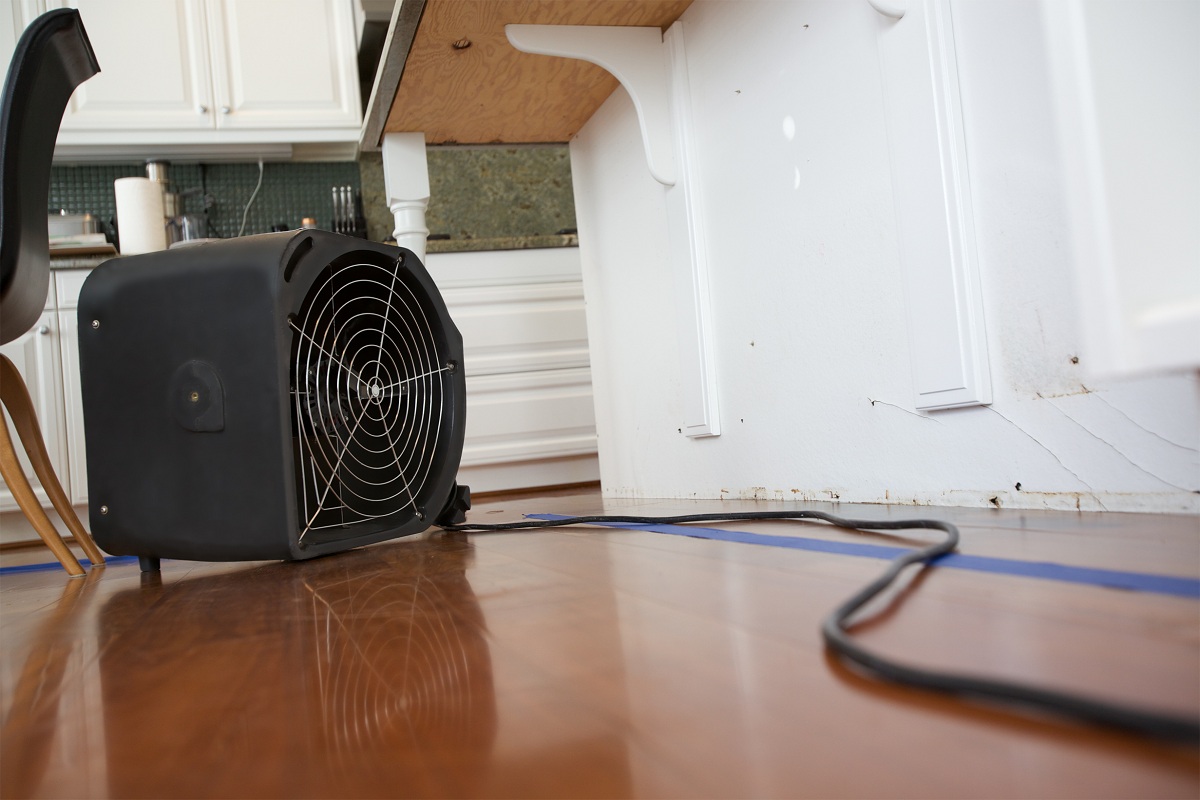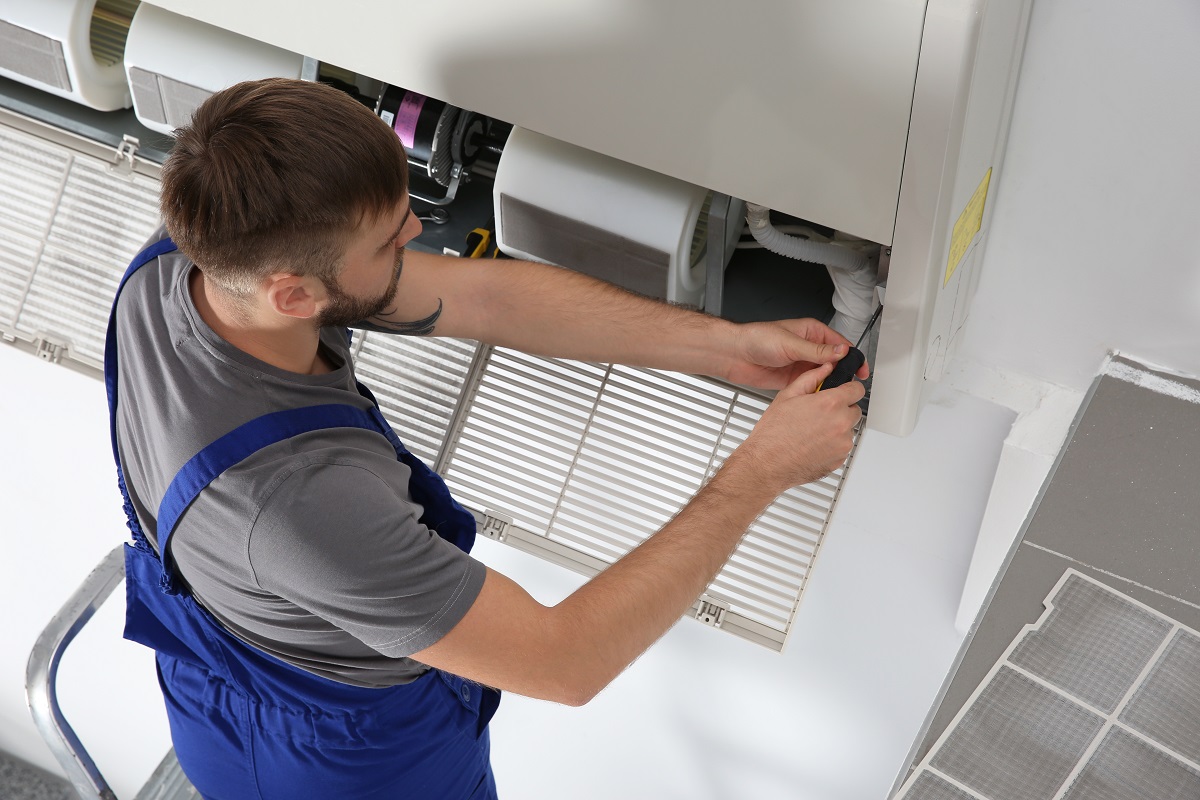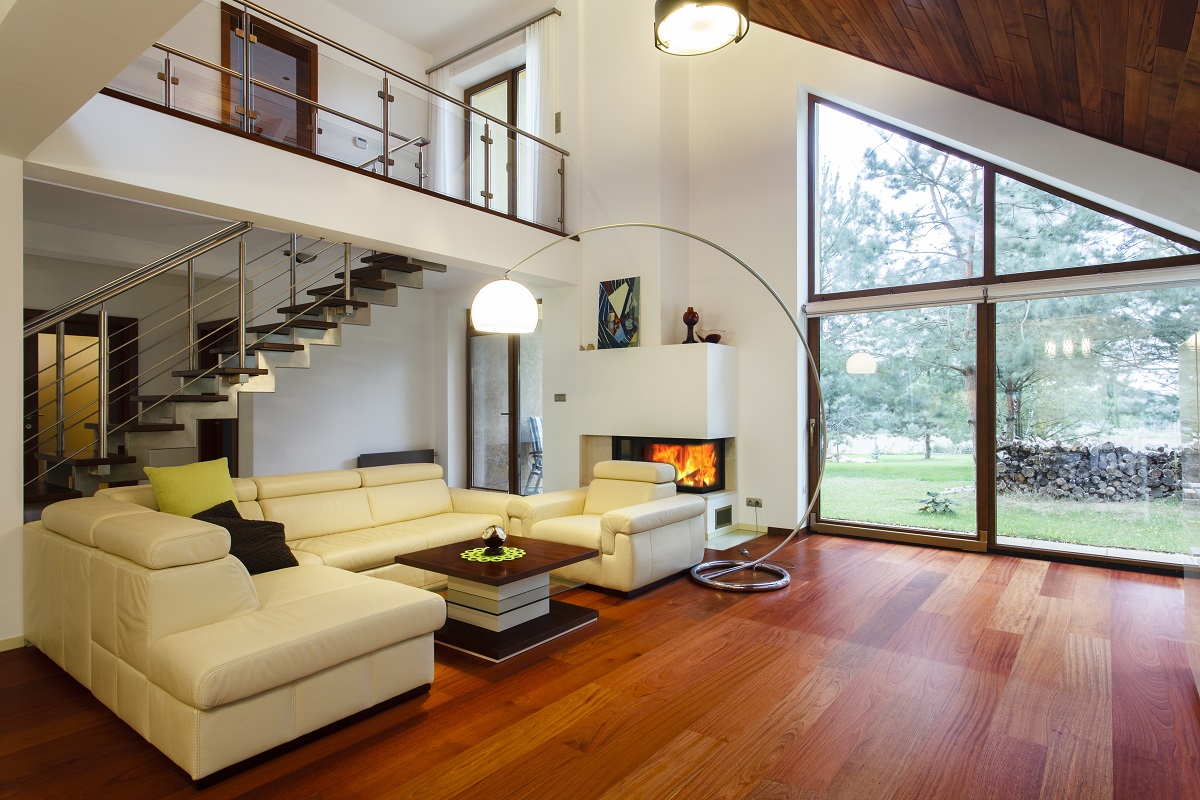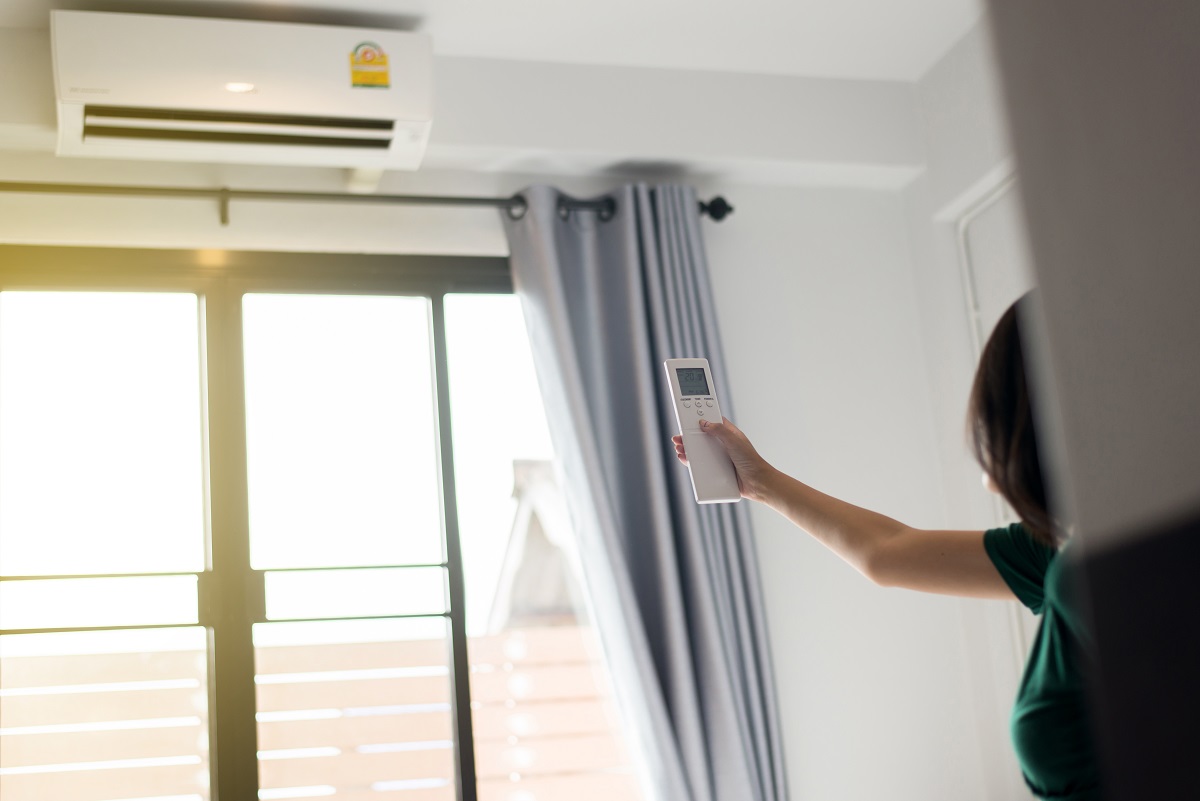The ongoing coronavirus pandemic has forced many people in the US to stay at home and avoid non-essential travel as much as possible. With millions of Americans remaining inside their homes, residential energy usage has soared.
An analysis of home electricity trends across the country since COVID-19 revealed that the average residential energy consumption shot up 22 percent compared to the previous year. This rise meant that most households in the country have to pay 22 percent more on their April 2020 utility bill than the preceding year.
If you have experienced a surge in your monthly electric bill, take measures to reduce unnecessary energy consumption and help keep your utility expenses in check.
As experienced insulation contractors in Kansas City, A+ Insulation knows what will help boost your home’s energy efficiency during these times of uncertainty:
-
Seal Leaks in Your Home
Leaks in your house can drive up your energy bills, as they allow cool air to escape during the summer and warm air to exit during the winter. Your heaters and air conditioners will have to work hard to effectively regulate the indoor temperature inside your house.
If you notice drafts in your home, have them sealed quickly to prevent cooled or heated air from escaping. We install various types of insulation to fill cracks and gaps that allow air to exit.
-
Minimize Your Water Heater Usage
Water heating can account for a large portion of your household electricity usage. With everyone staying at home, your water heater usage may rise significantly. You may use this appliance to make hot beverages, cook delicious meals, and do the laundry.
If you find that everyone in your home is using the water heater frequently, think of ways to use this appliance less often. A few examples to get you started are:
- Don’t wash your clothes using hot water. Use lukewarm or cold water when doing your laundry.
- Switch to cold or room temperature drinks instead of preparing hot beverages all the time.
- Take a shower without using the heater.
-
Use Space Heaters Sparingly
Although gas and electric space heaters keep your feet toasty and warm during cold days, they’re not an energy-efficient way to heat your house. Some space heaters use over a thousand watts — a figure that can make your electricity bill skyrocket.
If you need to use this appliance for your home, turn it on only during cold days. Alternatively, consider investing in affordable blankets or wearing layers of clothes to stay warm during the cold season.
-
Use Fans Instead of Air Conditioning Systems
 During summer, you and your family may be tempted to crank up the AC unit to stay cool and comfortable. This, however, can make your utility bills skyrocket.
During summer, you and your family may be tempted to crank up the AC unit to stay cool and comfortable. This, however, can make your utility bills skyrocket.
Stay comfortable without racking up your energy costs, invest in electric fans and use them more frequently than AC systems. You can easily find affordable and portable fans on the web or in various home improvement stores in the country.
Alternatively, you could put your ceiling fan to use if you have one installed in your home. Switching this appliance on can keep you cool without hurting your wallet.
-
Follow Good Thermostat Habits
Save about 10 percent every year on your heating and cooling with a simple adjustment: turn your thermostat back 7°-10°F from the normal setting for eight hours a day.
In summer, set the device to a warmer mode when you aren’t home and set it to cooler mode when you’re in. In winter, crank up the thermostat when you’re awake and set it lower when you’re asleep or out of the house.
Never set the device to a colder setting than normal because it’s a wasteful way to cool room. It will not cool the home faster when you turn on the AC.
-
Invest in a Smart Thermostat
If you’re tired of setting your thermostat manually every single time, get a smart thermostat for your home. This technology monitors your home’s cooling and heating behaviors. From the data it has gathered, the thermostat adjusts to the ideal temperature settings automatically, keeping you comfortable.
-
Do Away with Incandescent Light Bulbs
Still using incandescent lighting? Replace them with better alternatives, such as light-emitting diode (LED) bulbs, halogen light fixtures, and compact fluorescent lamps (CFLs). According to the U.S. Department of Energy, these energy-efficient lighting options use 25 to 80 percent less energy compared to conventional incandescent bulbs.
They also last up to 25 times longer.
-
Upgrade to Energy-Efficient Household Appliances
Washing machines, ovens, and TVs are large appliances that require substantial electricity. If you can’t remember the last time you purchased them, consider replacing them with energy-efficient models.
When browsing for home appliances, determine if the product you want has earned an ENERGY STAR label. An appliance with this symbol means that the device uses less energy than similar products. It also means that the appliance has undergone stringent energy efficiency criteria established by the U.S. Department of Energy or the Environmental Protection Agency.
Since ENERGY STAR appliances consume less energy, you can enjoy energy savings. You also help protect the environment by lowering your carbon footprint.
-
Tune up Your HVAC Systems
 Even if your heaters and air conditioning units bear the energy efficiency label on them, they still require periodic tune up to operate at optimal efficiency. Talk to your HVAC contractor and have them perform a checkup and maintenance on your appliances. They will clean the coils, lubricate the components, and tighten connections to make sure that they run at peak condition.
Even if your heaters and air conditioning units bear the energy efficiency label on them, they still require periodic tune up to operate at optimal efficiency. Talk to your HVAC contractor and have them perform a checkup and maintenance on your appliances. They will clean the coils, lubricate the components, and tighten connections to make sure that they run at peak condition.
-
Pull the Plug When Your Appliances are Not in Use
Simply hitting the “off” button in your appliances won’t do. You have to pull the plug on these devices, especially if you won’t use them frequently. Appliances, such as TVs and computers, consume tiny amounts of electricity when they are on standby mode. If they’re plugged in all the time, those few watts of energy consumption can add up and contribute to a high utility bill.
If you find unplugging the devices in your home a hassle, use power strips. With a single switch, you can turn off multiple appliances and make sure that they’re not running on standby energy.
-
Make the Switch from Desktop to Laptop
According to Computer Hope, you should have your computer replaced at least every four years. If your desktop device is due for replacement, get a laptop to satisfy your computing needs.
Why laptops? Laptop computers are more energy-efficient. They use up to 80 percent less energy. They also draw less electricity than desktops. Laptop computers may reach a maximum of 60 watts. Common desktop devices, on the other hand, may peak at approximately 175 watts.
-
Use “Outdoor Energy” During Summer
Rather than use appliances in your home for everyday tasks, take advantage of “outdoor energy” to get the job done.
Here are a few ideas:
- When cooking food for the entire family, ditch the electric stove or oven for a couple of days and use the barbecue grill to whip up delicious meals in your backyard.
- During the day, switch off all the house lights and open the blinds, curtains, or drapes. Use direct sunlight to illuminate your living areas.
- Hang up your clothes in your backyard and let the wind do the drying.
-
Install Storm Doors
A storm door goes beyond giving your house an additional layer of protection during inclement weather. It also makes your home more energy-efficient. These doors usually come with a protective coating or low-emissivity glass that helps minimize energy loss. Also, these entryways last for decades, making them a worthwhile investment.
-
Install Solar Panels
When you have some cash to spare, install solar panels on your rooftop. They’re becoming a popular way to produce electricity for homes. A report from Pew Research Center found that more homeowners in the country are thinking of going solar.
Solar panel installation comes with many benefits. On top of helping you save money on utility bills in the long run, your household can cut down your carbon footprint. You may even qualify for yearly tax incentives.
-
Conduct an Energy Audit of Your Home
An energy evaluation or audit is the process of determining the amount of energy your home uses. You can schedule an energy assessment by hiring a professional energy auditor. ;; At the end of the evaluation, your auditor will identify areas in your house that need improvement. At the same time, they will provide energy-saving opportunities to help you reduce your household bill.
We Help You Lower Energy Bills
Turn to A+ Insulation when you need energy evaluation and home insulation. We’ve helped more than 10,000 customers save money and become more energy-efficient.
When we install insulation in your home, we help you choose the right material for your property. Our trained and certified technicians also carry out efficient work. Expect us to complete your residential insulation project on time, on schedule, and on budget.
Whether you need an energy evaluation or new insulation for your house, we live up to our name and deliver A+ service to all our clients.
Schedule an appointment with A+ Insulation today and have one of our team members conduct a free, no-obligation assessment.






 It’s one thing to dream up a cozy new attic nook for the kids or your guests; it’s another to plan it out and execute the conversion. Though attic conversions are a common home improvement project in Kansas, it’s not as simple as putting up new walls and laying down new floors. It takes thorough planning and trusted professional help to get it done.
It’s one thing to dream up a cozy new attic nook for the kids or your guests; it’s another to plan it out and execute the conversion. Though attic conversions are a common home improvement project in Kansas, it’s not as simple as putting up new walls and laying down new floors. It takes thorough planning and trusted professional help to get it done. If you haven’t paid much attention to your attic’s insulation, then now’s the time to do so. Proper insulation keeps energy bills to a minimum because it prevents the outdoor conditions from affecting indoor temperatures.
If you haven’t paid much attention to your attic’s insulation, then now’s the time to do so. Proper insulation keeps energy bills to a minimum because it prevents the outdoor conditions from affecting indoor temperatures. Moisture is the common enemy of homeowners. It has wide-ranging implications, from structural home damage to health consequences.
Moisture is the common enemy of homeowners. It has wide-ranging implications, from structural home damage to health consequences. Generally, humid air is less dense than dry air because the water molecules make it lighter. This makes humid air naturally rise. An uninsulated attic may allow moisture to pass, through cracks on the surface or via diffusion. When moisture seeps into the attic, it may damage ceiling joists and other vital wooden structures.
Generally, humid air is less dense than dry air because the water molecules make it lighter. This makes humid air naturally rise. An uninsulated attic may allow moisture to pass, through cracks on the surface or via diffusion. When moisture seeps into the attic, it may damage ceiling joists and other vital wooden structures.
 According to the US Department of Energy, having a proper insulation system at home can save you up to 20 percent of your home’s heating costs. Now that you have decided to invest in proper insulation in your home in order to prepare for the coming winter, you might be a little lost on which parts of your home needs insulation and what type of insulation is best for it.
According to the US Department of Energy, having a proper insulation system at home can save you up to 20 percent of your home’s heating costs. Now that you have decided to invest in proper insulation in your home in order to prepare for the coming winter, you might be a little lost on which parts of your home needs insulation and what type of insulation is best for it.
 The easiest way to check on your home’s insulation material is by going up your attic. Put some old clothes on, together with all the safety equipment mentioned earlier, and head up. With your flashlight, check if the attic floor is filled to the joists with insulation material. Its appearance can vary according to the material used.
The easiest way to check on your home’s insulation material is by going up your attic. Put some old clothes on, together with all the safety equipment mentioned earlier, and head up. With your flashlight, check if the attic floor is filled to the joists with insulation material. Its appearance can vary according to the material used.
 Electricity bills tend to increase in summer. The U.S. Energy Information Administration (EIA) explains the
Electricity bills tend to increase in summer. The U.S. Energy Information Administration (EIA) explains the